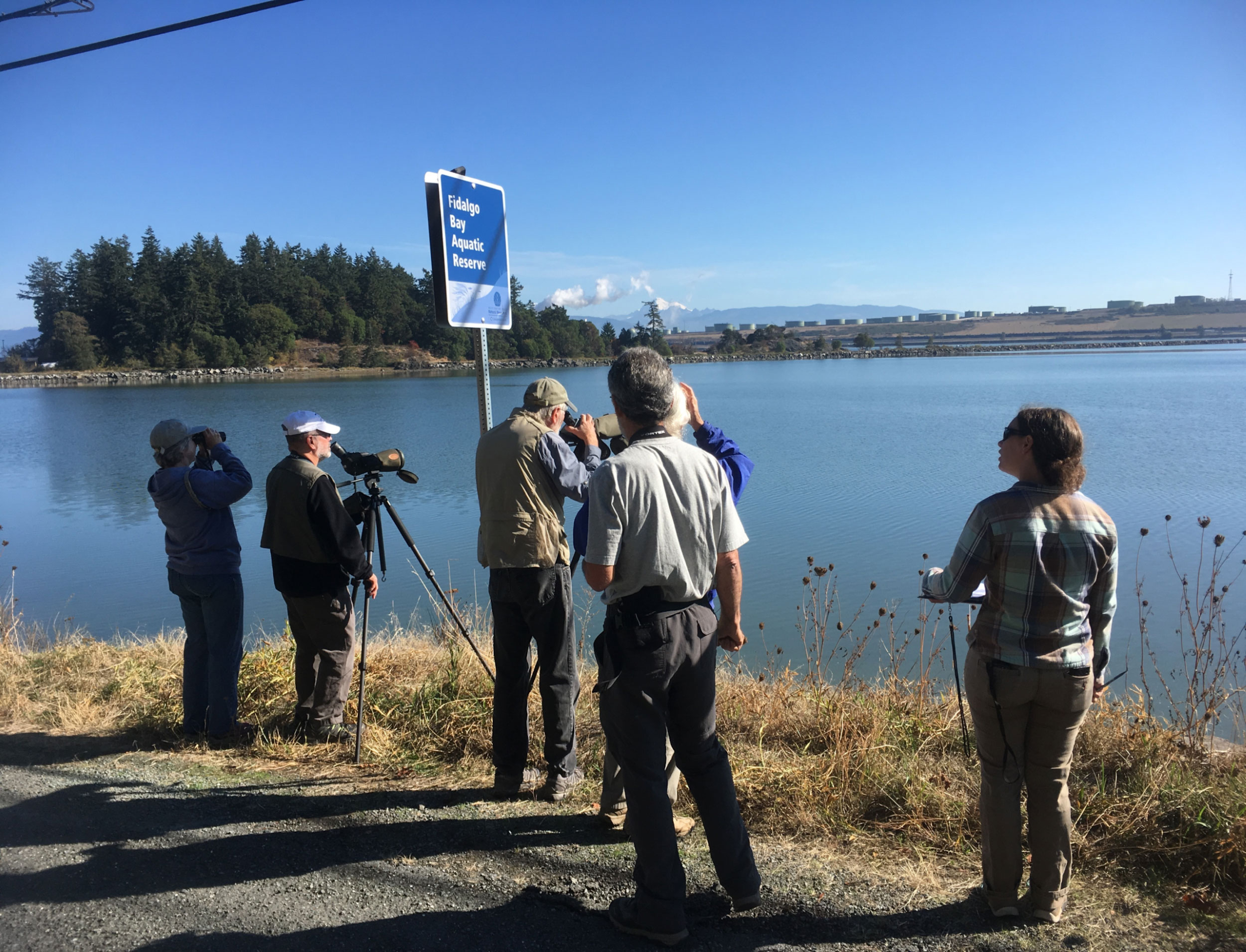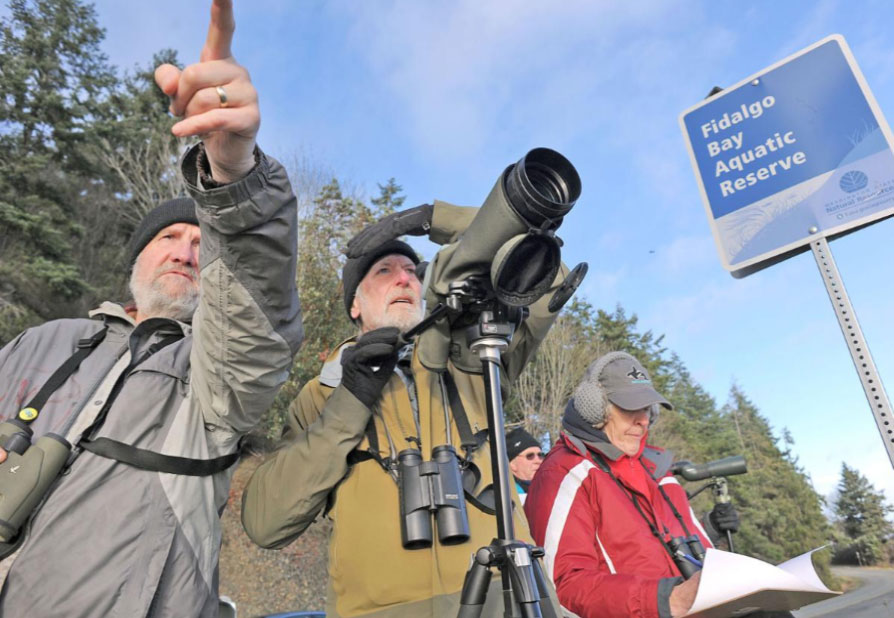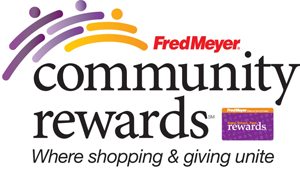UPDATE: Grant for Fidalgo Bay and City of Anacortes stormwater monitoring.
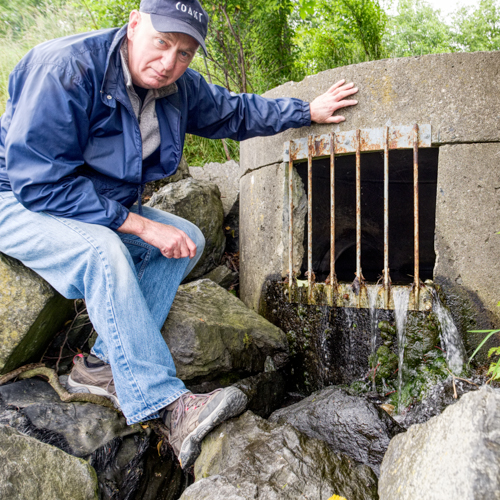
The Rose Foundation awarded a significant grant to Friends of Skagit Beaches for monitoring stormwater outfalls at the point where stormwater meets saltwater. The objective of this project is to create a continuously updated baseline of measured stormwater pollution levels that reach Puget Sound.
The City of Anacortes has more than 80 outfalls that deposit stormwater directly into Puget Sound. This project, manned by volunteers, will monitor most of these outfalls. The outfalls not monitored are either on private land or are too unsafe for a volunteer to reach.
(FOSB President Tim Gohrke checking out one of Fidalgo Islands stormwater outfalls)
This stormwater pollution monitoring project is a partnership with Friends of Skagit Beaches, the City of Anacortes, and the Samish Tribe's Department of Natural Resources.
At this stage the project is organizing the training curriculum around six types of measurements:
1. Dissolved Oxygen Levels
2. Salinity
3. pH
4. Water Temperature
5. Turbidity
6. Fecal Coliform levels
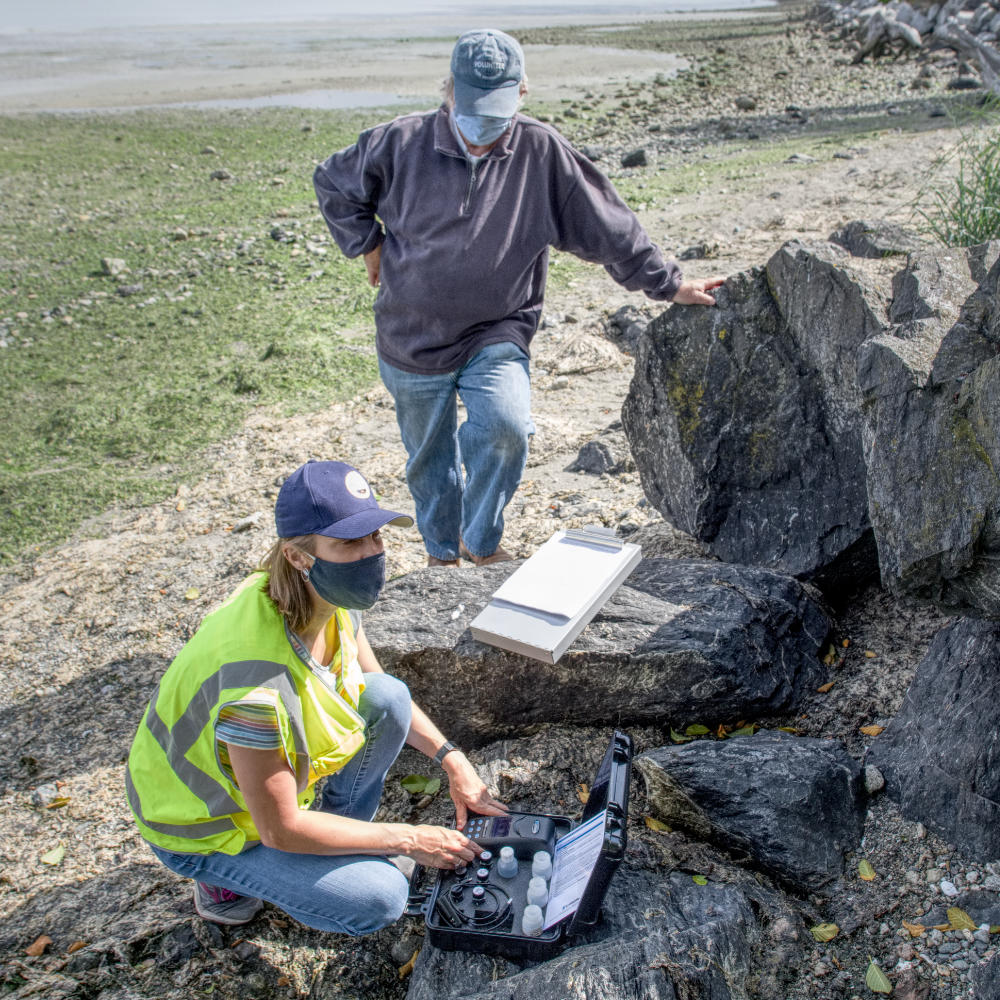 Volunteers will use several calibrated electronic measuring devices for fast and accurate data capture. The data will be stored in the project's own database. The Rose Foundation grant provides funding for two years. At the end of that two year period the project will visualize the data and show the actual levels of pollution from Anacortes stormwater.
Volunteers will use several calibrated electronic measuring devices for fast and accurate data capture. The data will be stored in the project's own database. The Rose Foundation grant provides funding for two years. At the end of that two year period the project will visualize the data and show the actual levels of pollution from Anacortes stormwater.
(Pictured: Wayne Huseby watches Diane Hennebert (City of Anacortes) calibrate her turbidity test equipment. This procedure involves three bottles with known turbidity levels. The sensor is shown each bottle and calibrated to that level. This machine will be used by the FOSB stormwater monitoring volunteers in their monthly data gathering work among the city's stormwater outfalls.)
The State Department of Ecology requires that a municipality with a stormwater permit must examine and sample at least 13% of their entire stormwater pipe network each year. Most municipalities have budget shortages for manpower. Usually no more than 13% is examined. That means in the five year permit time frame no more than 65% of a town's stormwater system is monitored, and likely only once in five years.
Stormwater is the state's largest single pollution source according to The Department of Ecology. It's greater than waste water treatment or agricultural runoff. Yet no municipality can routinely or consistently report pollution levels that discharge into Puget Sound.
This situation seems tailor-made for a citizen science volunteer campaign. The Anacortes stormwater monitoring project will not stop pollution, but will guide the city's limited manpower to find and eliminate the sources of pollution that the volunteers detect.
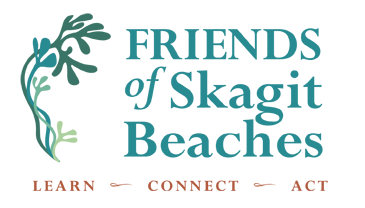

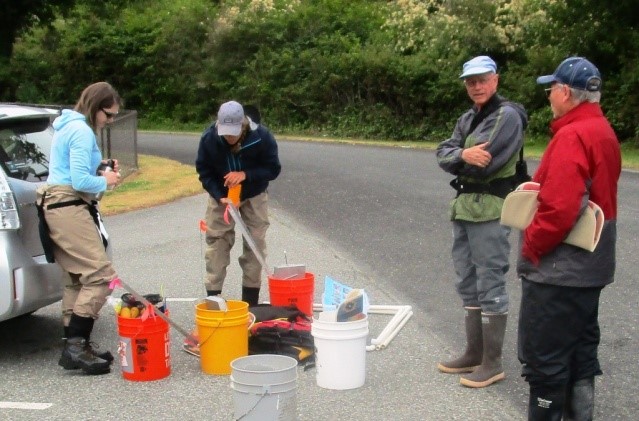 going to help a couple of young ladies, Jamie Kilgo and Cassidy Johnson from the Department of Natural Resources (DNR), with a kelp harvesting study. Pretty much what everybody does on the 4th of July, right? The goal of their study is to gather information about harvester practices and evaluate potential impacts of harvesting on the intertidal kelp community. Kelp is a broad term used to describe a group of brown macroalgae species common to our Salish Sea rocky shores, including the iconic bull kelp (Nereocystis leutkeana). Kelp forests, as they are known, are extensive underwater (most of the time) “factories” that convert solar energy into food and protective structure for many of its inhabitants, like invertebrates and fish, including juvenile salmonids. They are vital to a healthy intertidal and subtidal ecosystem.
going to help a couple of young ladies, Jamie Kilgo and Cassidy Johnson from the Department of Natural Resources (DNR), with a kelp harvesting study. Pretty much what everybody does on the 4th of July, right? The goal of their study is to gather information about harvester practices and evaluate potential impacts of harvesting on the intertidal kelp community. Kelp is a broad term used to describe a group of brown macroalgae species common to our Salish Sea rocky shores, including the iconic bull kelp (Nereocystis leutkeana). Kelp forests, as they are known, are extensive underwater (most of the time) “factories” that convert solar energy into food and protective structure for many of its inhabitants, like invertebrates and fish, including juvenile salmonids. They are vital to a healthy intertidal and subtidal ecosystem.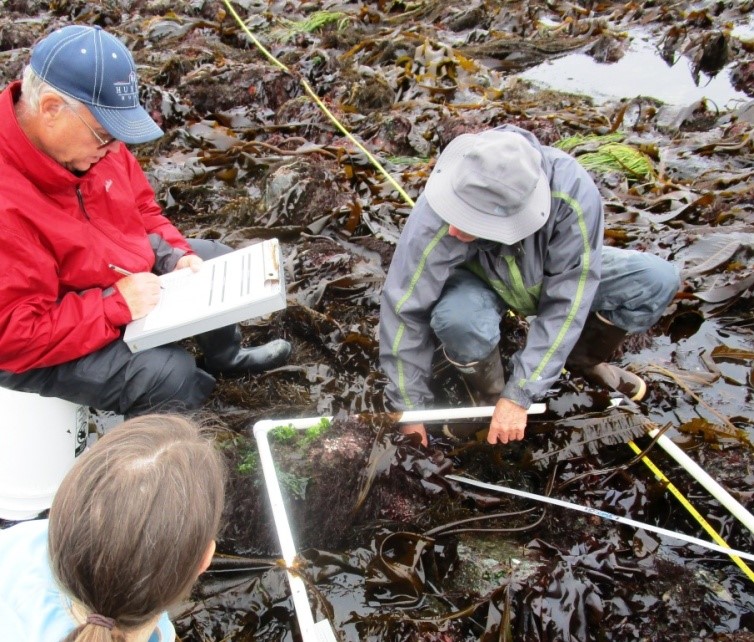 Although Tom and I are experienced citizen scientists, neither of us had experience with these types of studies. We are both former engineers so almost impossible to train! Pete was an “old hand” having been out on the beach with Dale Fournier, FBARCSC member, and Jamie a few weeks earlier. By some miracle, Jamie and Cassidy were able to quickly teach us (the tide would soon be coming back in!) how to identify, measure, and record data on these amazing macroalgae in a very short time. Proof that you can teach an old dog new tricks!
Although Tom and I are experienced citizen scientists, neither of us had experience with these types of studies. We are both former engineers so almost impossible to train! Pete was an “old hand” having been out on the beach with Dale Fournier, FBARCSC member, and Jamie a few weeks earlier. By some miracle, Jamie and Cassidy were able to quickly teach us (the tide would soon be coming back in!) how to identify, measure, and record data on these amazing macroalgae in a very short time. Proof that you can teach an old dog new tricks!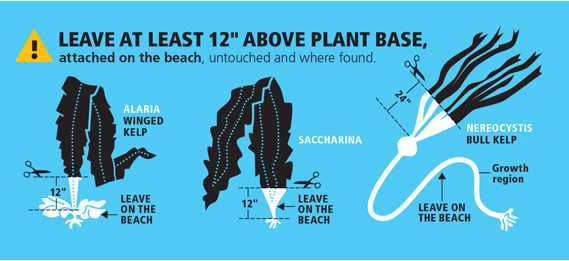 program. Interpretative signs were developed and installed a few years ago. Harvesters are provided information on the best method to harvest kelp so that it can survive and re-grow. It turns out the methods used to harvest kelp are critical to sustainability. If the stem is cut too close (generally less than 12”) to the holdfast, it is not able to regenerate and/or reproduce. Not a good thing if we want sustainable kelp forests!
program. Interpretative signs were developed and installed a few years ago. Harvesters are provided information on the best method to harvest kelp so that it can survive and re-grow. It turns out the methods used to harvest kelp are critical to sustainability. If the stem is cut too close (generally less than 12”) to the holdfast, it is not able to regenerate and/or reproduce. Not a good thing if we want sustainable kelp forests!

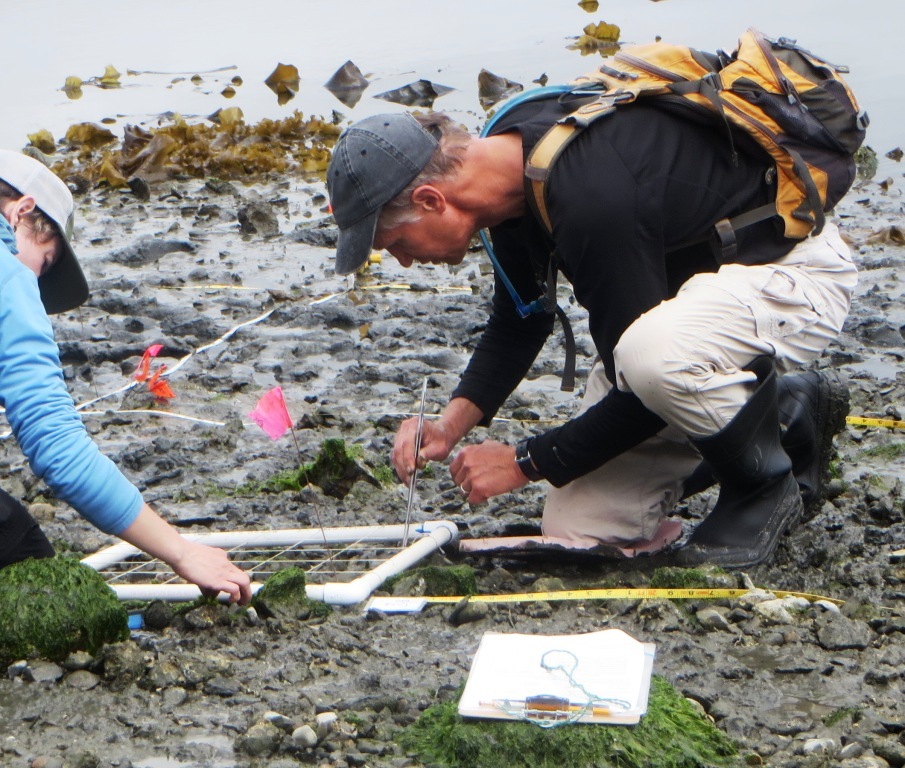

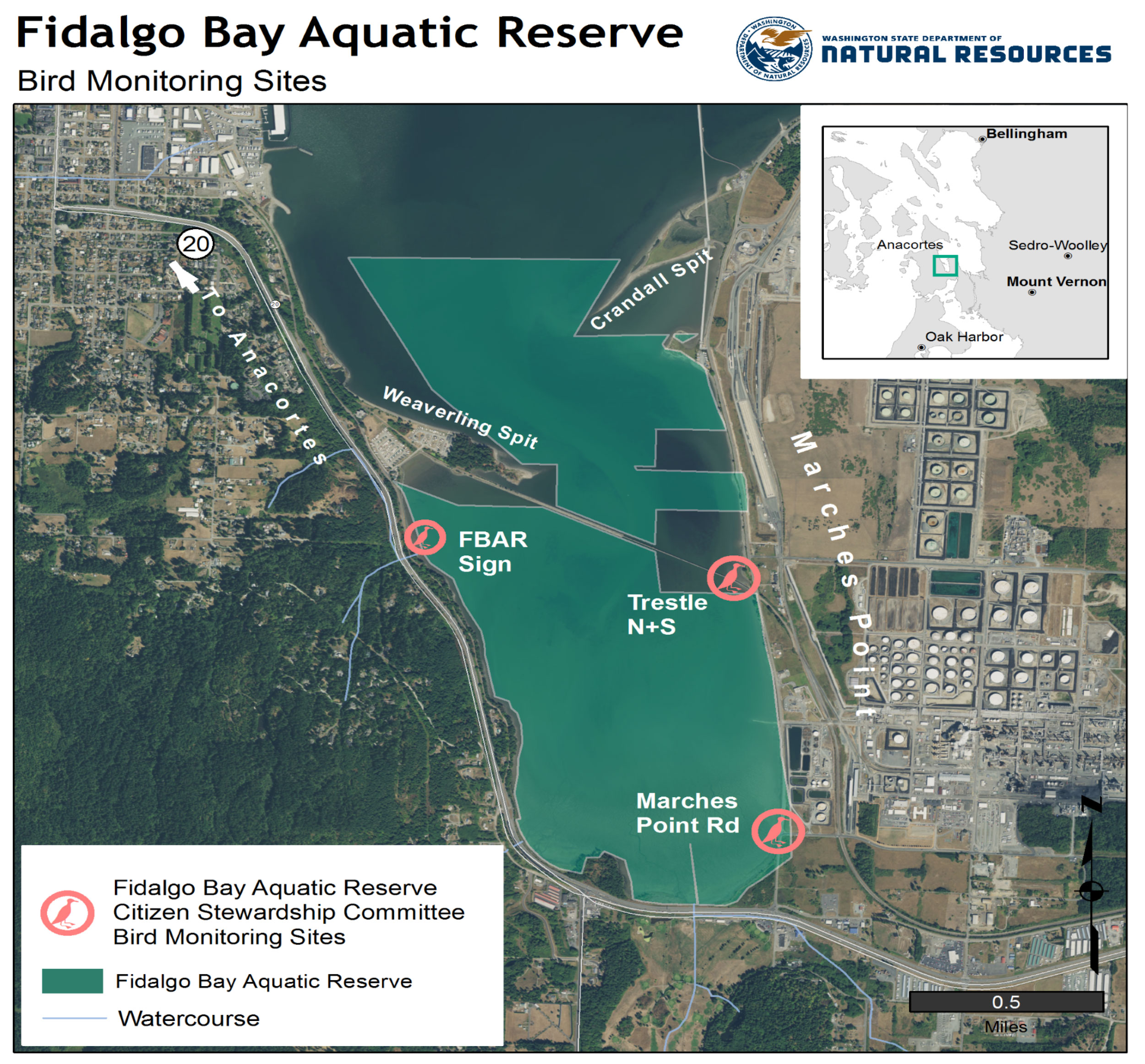
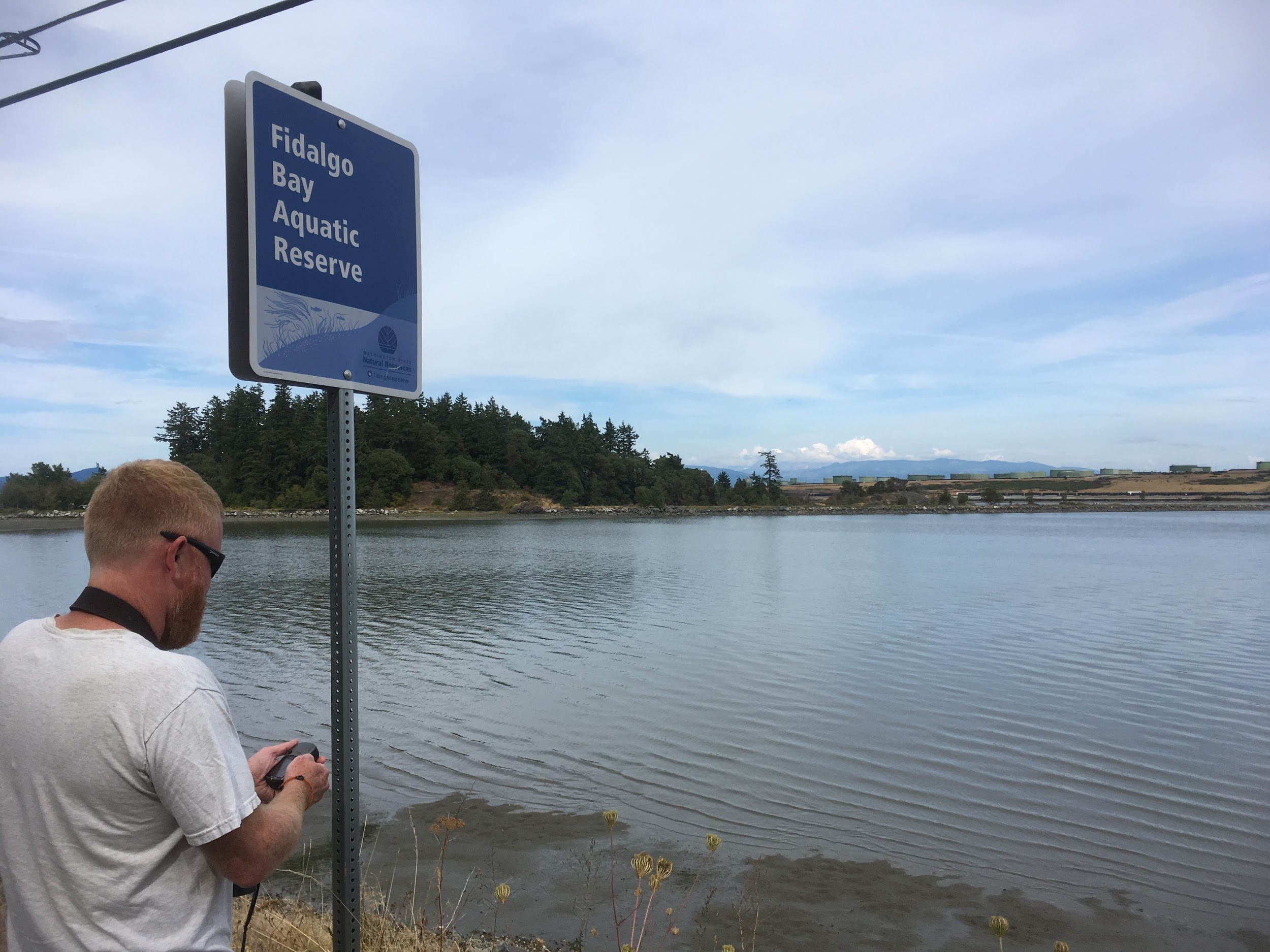 We also had the privilege of receiving instruction with volunteer training and protocol development by Washington Fish and Wildlife seabird biologist, Caanan Cowles (pictured to the left). Caanan also happened to work for John Bower back in the early 2000s when he last conducted bird surveys in Fidalgo Bay, so he helped us determine the four site locations for our survey as well. The surveys run from September to May for the overwintering season, and this year’s survey was our pilot year to work out the details in the protocol as well as organize a solid group of citizen science volunteers. We held a training in February at the Fidalgo Bay RV Park that had 19 participants, and around 6 volunteers attend the surveys each month.
We also had the privilege of receiving instruction with volunteer training and protocol development by Washington Fish and Wildlife seabird biologist, Caanan Cowles (pictured to the left). Caanan also happened to work for John Bower back in the early 2000s when he last conducted bird surveys in Fidalgo Bay, so he helped us determine the four site locations for our survey as well. The surveys run from September to May for the overwintering season, and this year’s survey was our pilot year to work out the details in the protocol as well as organize a solid group of citizen science volunteers. We held a training in February at the Fidalgo Bay RV Park that had 19 participants, and around 6 volunteers attend the surveys each month.